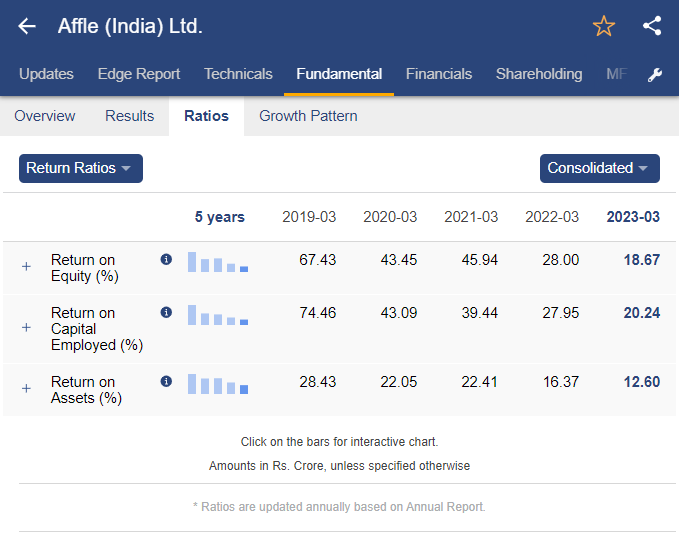Top 10 Tips For Understanding Market Volatility, From Penny Stock To copyright
Understanding market volatility is vital for AI trading, whether it’s cryptoassets or penny stocks. Here are ten essential tips for navigating and leveraging market volatility effectively.
1. Find out what triggers volatility
Learn the key factors that determine how volatile the market you choose to invest in.
Penny Stocks – Company news earnings, a lack of liquidity and other information.
copyright: updates to the regulatory framework and advancements in blockchain technology, and macroeconomic developments.
Be aware of the drivers and be prepared for price fluctuations.
2. Use AI to track the Volatility Indices
Make use of AI for monitoring indicators of volatility, like:
Implied volatility: It reveals that the price of future prices are expected to fluctuate.
Bollinger Bands – Highlights situations of overbought or undersold
AI can interpret these indicators quicker and more accurately than manually.
3. The History of Volatility
Tips: Use AI software to identify patterns of volatility and analyse past price movements.
Examples: copyright assets often exhibit more volatility in the wake of major events such as halving or forks.
Understanding past trends can help predict future trends.
4. Make use of the Sentiment Analysis
Make use of AI to evaluate sentiment on social media, news and forums.
Keep an eye on the niche market as well as small-cap discussions.
copyright: Study the discussion on Reddit Twitter and Telegram.
Reason: Sentiment shifting could result in extreme fluctuations.
5. Automate Risk Management
Tips: You can utilize AI to automatically set up stop-loss orders as well as trailing stops.
Why are automated systems secure you from sudden volatility spikes.
6. Strategically trade volatile assets
Tip: Choose trading strategies suited for markets with high volatility:
Penny Stocks, concentrate on momentum trading strategies or breakout strategies
You might consider using a trend-following technique or a mean-reversion technique.
Why: Matching your strategy to fluctuations increases your chances of success.
7. Diversify Your Portfolio
Diversify your investment portfolio across different categories, sectors, or asset classes. market caps.
Why: Diversification reduces the overall impact of extreme volatility within one area.
8. Watch the Liquidity
Make use of AI tools to perform market depth analysis and to analyze bid-ask prices.
Why is this? A lack of liquidity in some copyright or penny stocks could result in volatility rising and slide.
9. Stay informed on Macro Events
Tips. Data feed to AI models on macroeconomics, central bank policies, and geopolitical events.
Why: Broader market events often create ripple effects in volatile assets.
10. Beware of Investing with emotion
Tip: To eliminate the bias of emotions Let AI handle decision-making during periods that are high-volatility.
What’s the reason? Emotional reactions frequently lead to poor decisions, such as panic selling or excessive trading.
Bonus Tip: Use volatility to your Benefit
Tip: Look for opportunities to arbitrage quickly or scalp trades in volatile surges.
If handled with a sense of discipline, volatility could provide lucrative opportunities.
These suggestions will help you better manage and comprehend the volatility of markets. It is also possible to utilize AI to improve your trading strategies, no matter if it’s in copyright or penny stocks. View the recommended best ai copyright blog for blog advice including best ai stocks, ai copyright trading bot, trade ai, copyright ai trading, ai stock trading bot free, ai investing app, ai penny stocks, ai stock analysis, ai stocks, ai for trading and more.

Top 10 Suggestions For Ai Stock-Pickers To Increase Data Quality
AI-driven investing, stock forecasts and investment decisions need high-quality data. AI models are more accurate and reliable when they are based on quality data. Here are 10 suggestions to increase the data quality of AI stock-pickers.
1. Prioritize information that is clean and well-structured.
Tip: Make sure your data are clean and error-free. Also, ensure that your data is formatted consistently. It is important to remove duplicate entries, handle missing values, and to ensure the integrity of your data.
Why? Clear and well-structured information allows AI models process information more efficiently. This leads to better predictions and fewer mistakes made in decisions.
2. Real-Time Information, Timeliness and Availability
Tips: To make accurate predictions, make use of current, real-time market data, such as stock prices and trading volumes.
The reason: Data that is updated regularly ensures AI models are reliable, particularly in volatile markets like penny stocks or copyright.
3. Data from trusted providers
Tips: Choose reliable data providers and have been certified for technical and fundamental data such as economic reports, financial reports and price feeds.
Why: Utilizing a reliable source decreases the risk of data errors and inconsistencies that can affect AI models’ performance, resulting in inaccurate predictions.
4. Integrate Multiple Data Sources
TIP: Use different sources of data like news sentiment and financial statements. It is also possible to combine indicators of macroeconomics with technical ones like moving averages or RSI.
Why: By taking in the various aspects of stock performance, AI can make better decisions.
5. Backtesting using historical data
To assess the effectiveness of AI models, collect high-quality historical market data.
The reason is that historical data allow for the refinement of AI models. You can simulate trading strategies and evaluate the potential return to make sure that AI predictions are robust.
6. Verify the Quality of data continuously
Tips Check for data inconsistent. Refresh old data. Ensure data relevance.
What is the reason: Consistent validation assures that the information you feed into AI models is reliable and reduces the chance of making incorrect predictions based upon inaccurate or obsolete data.
7. Ensure Proper Data Granularity
Tip: Choose the appropriate level of data granularity for your strategy. Make use of daily data to invest in the long run or minute by minute data for trading with high frequency.
Why? The right level of granularity for your model is vital. For short-term strategies for trading can benefit from high-frequency data for long-term investment, whereas long-term strategies require greater detail and a lower frequency amount of data.
8. Use alternative sources of data
You might want to consider using other sources of data like satellite images, social media sentiment or web scraping to track market trends and news.
Why: Alternative data provides unique insight into market behaviour, providing your AI system an edge by detecting patterns that traditional sources of data could overlook.
9. Use Quality-Control Techniques for Data Preprocessing
Tips: Make use of methods to ensure data quality, such as normalization of data, outlier identification, and feature scaling before feeding raw data into AI models.
What is the reason? A thorough preprocessing process will make sure that the AI model can understand the data accurately and reduce the amount of errors in forecasts and also enhancing the performance overall of the AI model.
10. Monitor Data Drift and Adapt Models
Tips: Make adjustments to your AI models to the changes in the data’s characteristics over time.
The reason: Data drift can negatively affect the accuracy of a model. By identifying, and adjusting to shifts in the patterns of data, you can ensure your AI is effective in the long run, particularly on dynamic markets like copyright or penny stocks.
Bonus: Keep an Information Loop to Ensure Improvement
Tip Set up a feedback mechanism in which AI algorithms continually learn new data from their performance results and increase the way they collect data.
The reason: Feedback cycles allows you to improve data quality in the course of time and ensures AI models are updated to reflect the current market conditions and trends.
In order for AI stock-pickers to realize their potential, it is essential to concentrate on data quality. AI models are able to make more accurate predictions when they have access to high-quality data that is clean and current. This allows them to make better investment choices. These suggestions can help you ensure that your AI model has the best foundation of data to support stocks, predictions, and investment strategy. Have a look at the top best ai stock trading bot free for blog tips including ai stock price prediction, ai copyright trading bot, using ai to trade stocks, free ai trading bot, ai stock trading app, ai copyright trading bot, investment ai, ai day trading, ai stock market, ai trading and more.
